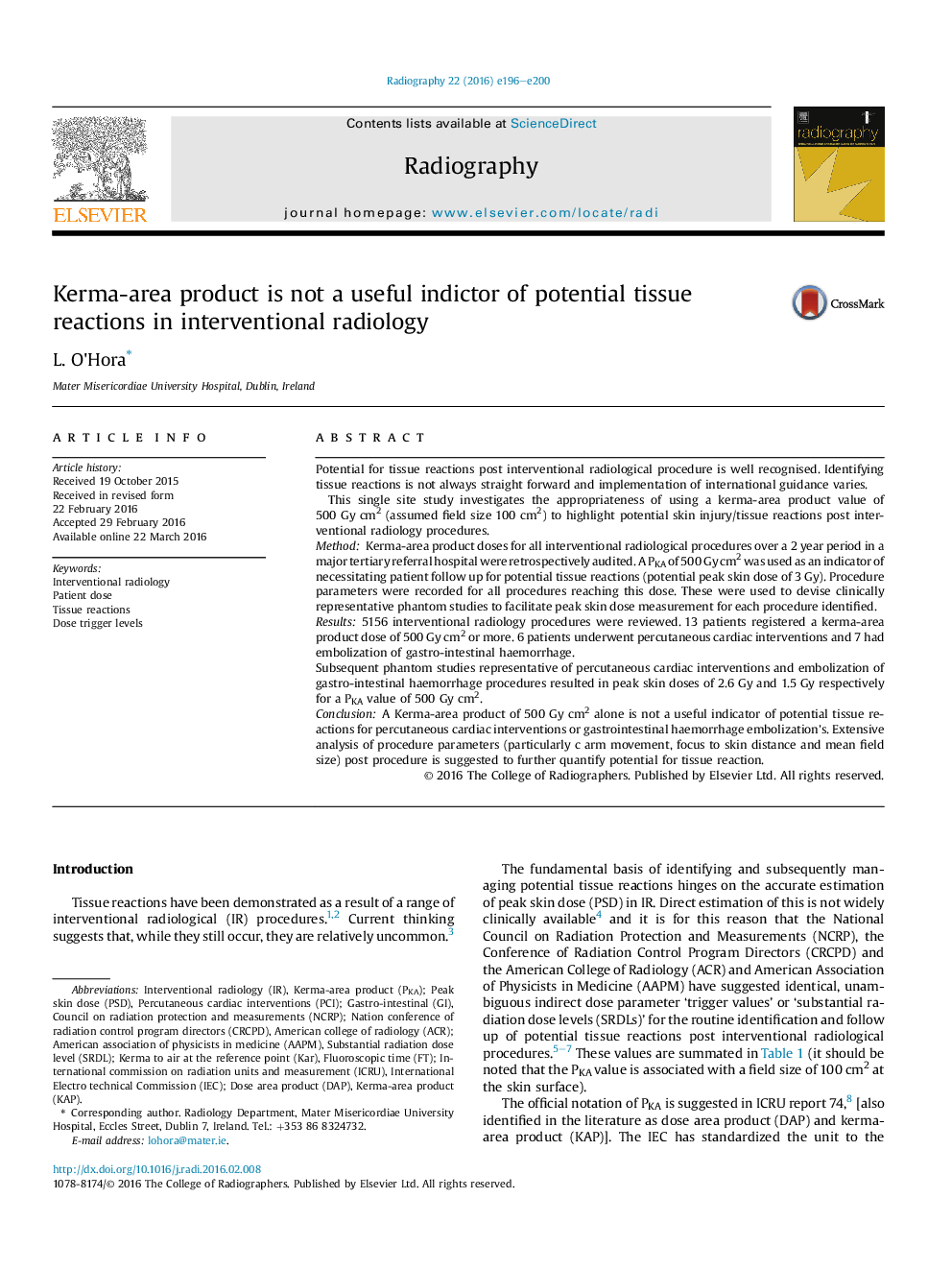| Article ID | Journal | Published Year | Pages | File Type |
|---|---|---|---|---|
| 2735674 | Radiography | 2016 | 5 Pages |
•IR procedures where PKA ≥ 500 Gy.cm2 represented 0.097% of IR procedures audited.•PCI and GI embolizations were identified as procedures where PKA ≥ 500 Gy cm2.•Representative phantom studies resulted in PSD of 2.6 Gy and 1.5 Gy respectively.•PKA is not a useful trigger for tissue reactions for procedures investigated.
Potential for tissue reactions post interventional radiological procedure is well recognised. Identifying tissue reactions is not always straight forward and implementation of international guidance varies.This single site study investigates the appropriateness of using a kerma-area product value of 500 Gy cm2 (assumed field size 100 cm2) to highlight potential skin injury/tissue reactions post interventional radiology procedures.MethodKerma-area product doses for all interventional radiological procedures over a 2 year period in a major tertiary referral hospital were retrospectively audited. A PKA of 500 Gy cm2 was used as an indicator of necessitating patient follow up for potential tissue reactions (potential peak skin dose of 3 Gy). Procedure parameters were recorded for all procedures reaching this dose. These were used to devise clinically representative phantom studies to facilitate peak skin dose measurement for each procedure identified.Results5156 interventional radiology procedures were reviewed. 13 patients registered a kerma-area product dose of 500 Gy cm2 or more. 6 patients underwent percutaneous cardiac interventions and 7 had embolization of gastro-intestinal haemorrhage.Subsequent phantom studies representative of percutaneous cardiac interventions and embolization of gastro-intestinal haemorrhage procedures resulted in peak skin doses of 2.6 Gy and 1.5 Gy respectively for a PKA value of 500 Gy cm2.ConclusionA Kerma-area product of 500 Gy cm2 alone is not a useful indicator of potential tissue reactions for percutaneous cardiac interventions or gastrointestinal haemorrhage embolization's. Extensive analysis of procedure parameters (particularly c arm movement, focus to skin distance and mean field size) post procedure is suggested to further quantify potential for tissue reaction.
